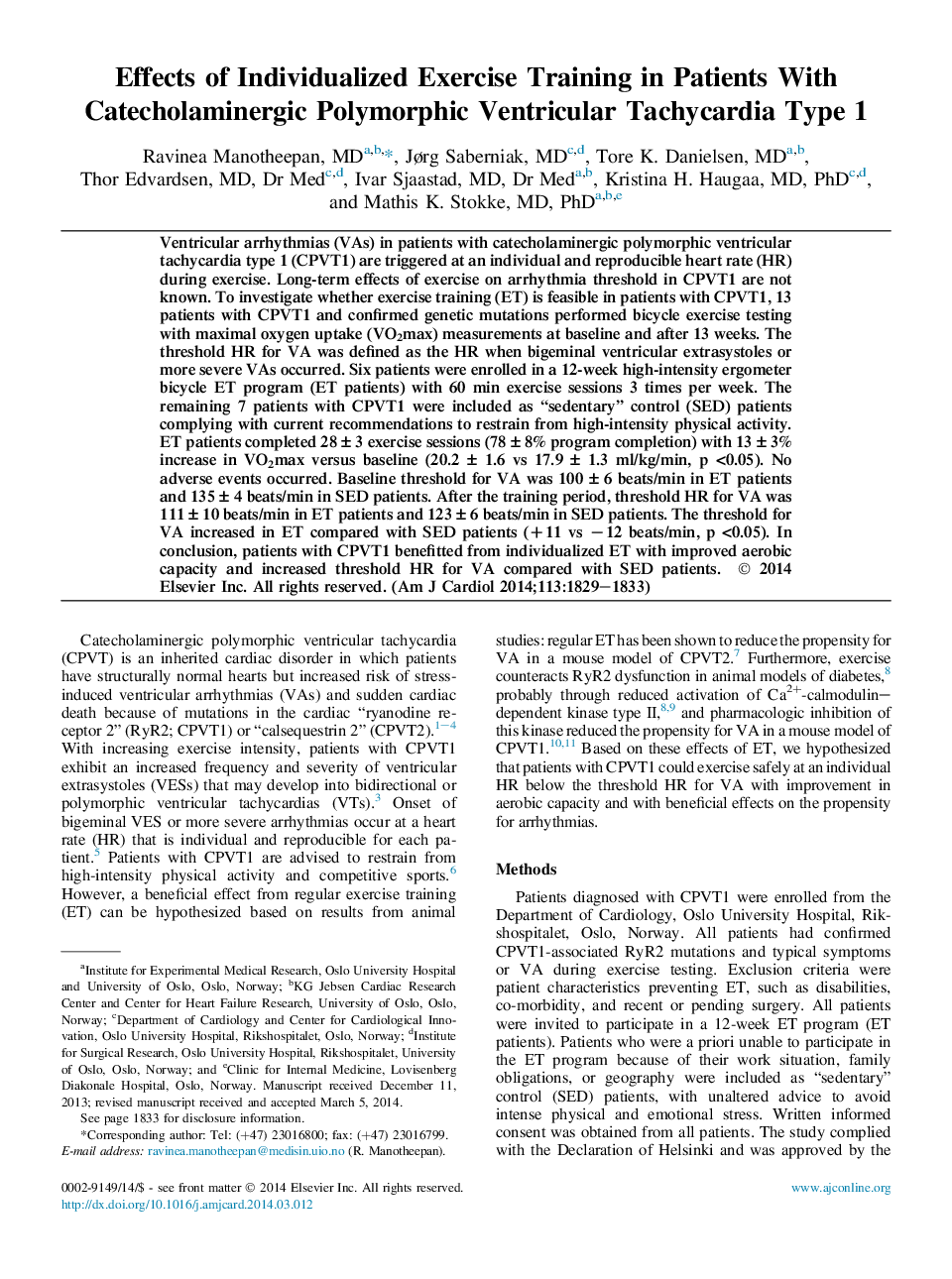| Article ID | Journal | Published Year | Pages | File Type |
|---|---|---|---|---|
| 2854213 | The American Journal of Cardiology | 2014 | 5 Pages |
Ventricular arrhythmias (VAs) in patients with catecholaminergic polymorphic ventricular tachycardia type 1 (CPVT1) are triggered at an individual and reproducible heart rate (HR) during exercise. Long-term effects of exercise on arrhythmia threshold in CPVT1 are not known. To investigate whether exercise training (ET) is feasible in patients with CPVT1, 13 patients with CPVT1 and confirmed genetic mutations performed bicycle exercise testing with maximal oxygen uptake (VO2max) measurements at baseline and after 13 weeks. The threshold HR for VA was defined as the HR when bigeminal ventricular extrasystoles or more severe VAs occurred. Six patients were enrolled in a 12-week high-intensity ergometer bicycle ET program (ET patients) with 60 min exercise sessions 3 times per week. The remaining 7 patients with CPVT1 were included as “sedentary” control (SED) patients complying with current recommendations to restrain from high-intensity physical activity. ET patients completed 28 ± 3 exercise sessions (78 ± 8% program completion) with 13 ± 3% increase in VO2max versus baseline (20.2 ± 1.6 vs 17.9 ± 1.3 ml/kg/min, p <0.05). No adverse events occurred. Baseline threshold for VA was 100 ± 6 beats/min in ET patients and 135 ± 4 beats/min in SED patients. After the training period, threshold HR for VA was 111 ± 10 beats/min in ET patients and 123 ± 6 beats/min in SED patients. The threshold for VA increased in ET compared with SED patients (+11 vs −12 beats/min, p <0.05). In conclusion, patients with CPVT1 benefitted from individualized ET with improved aerobic capacity and increased threshold HR for VA compared with SED patients.
